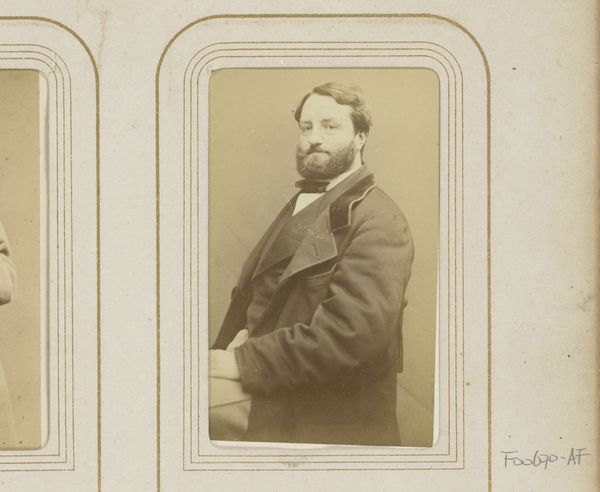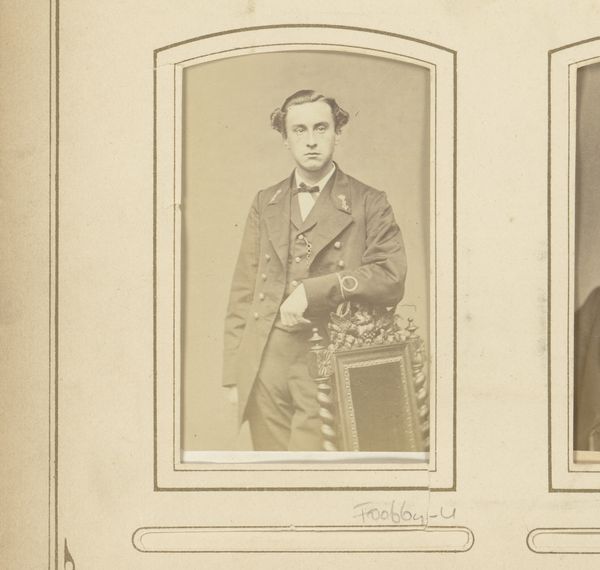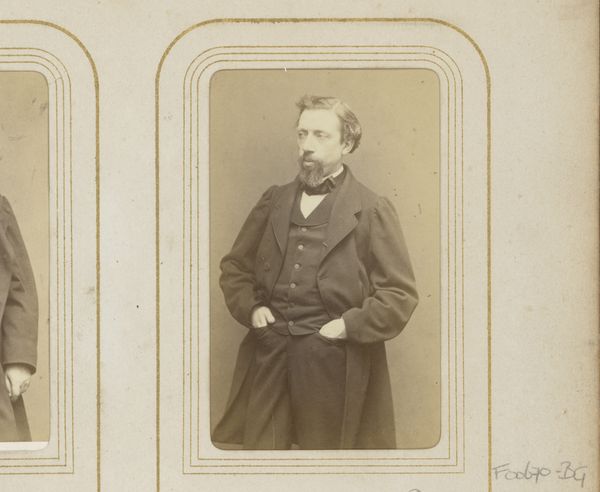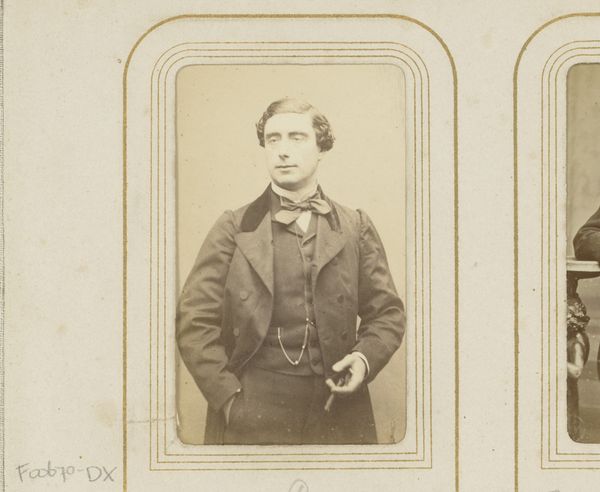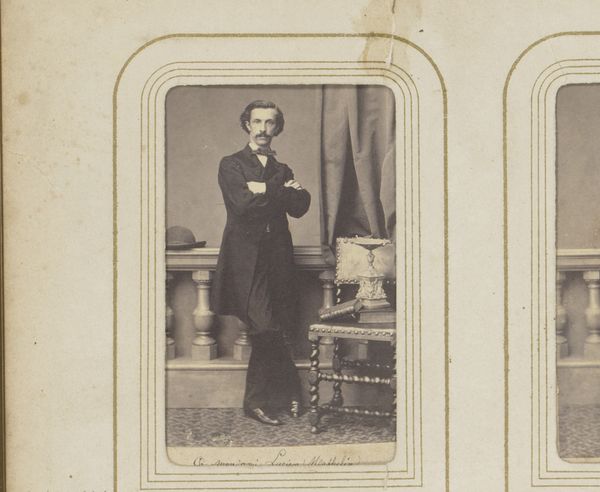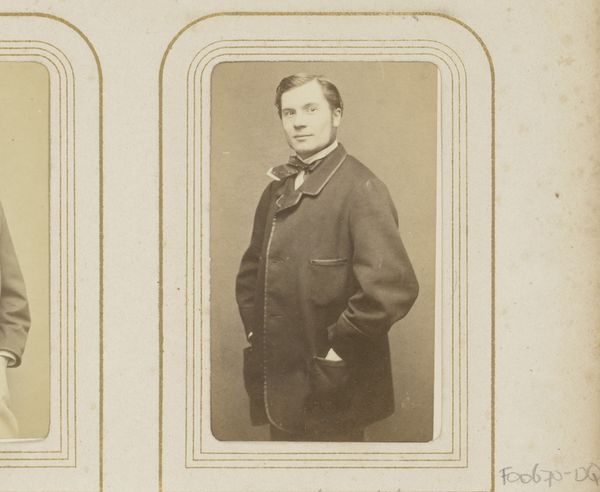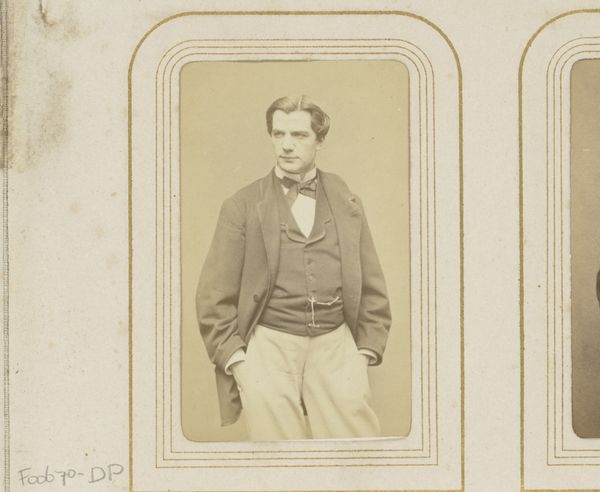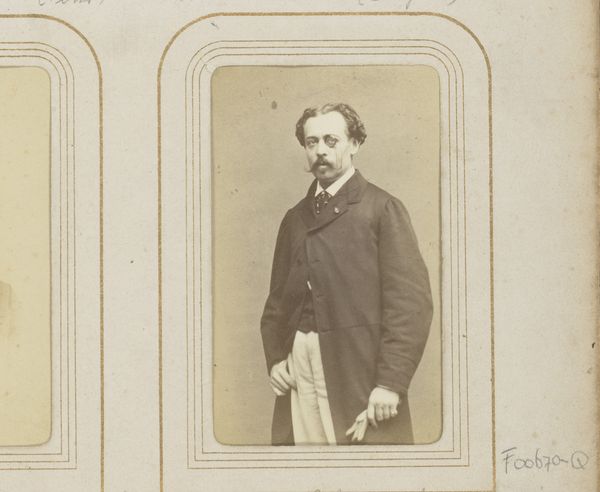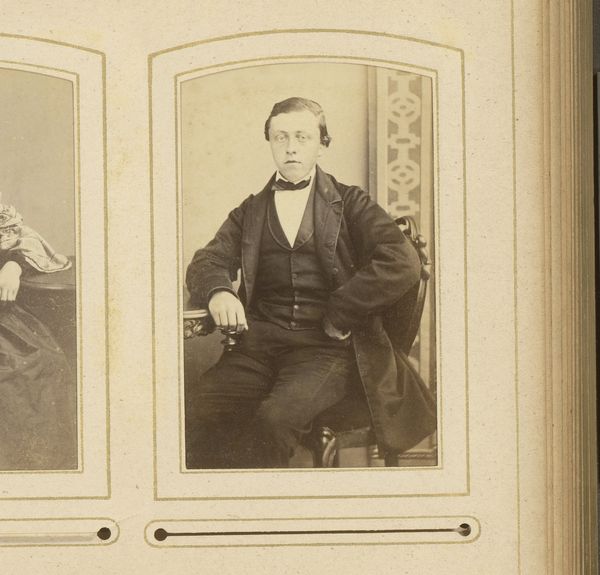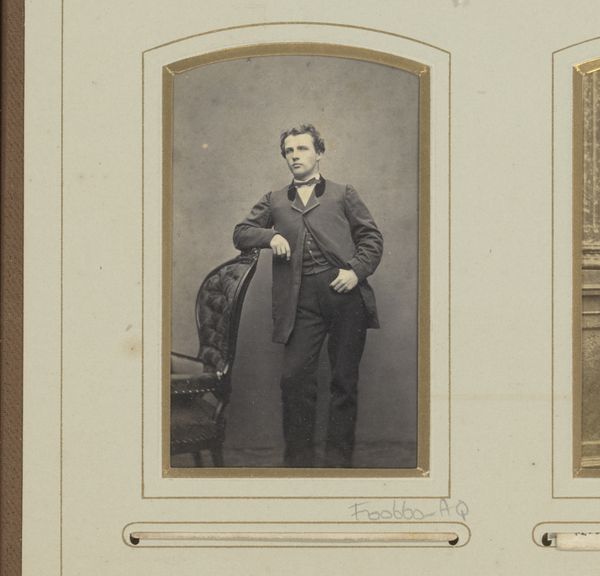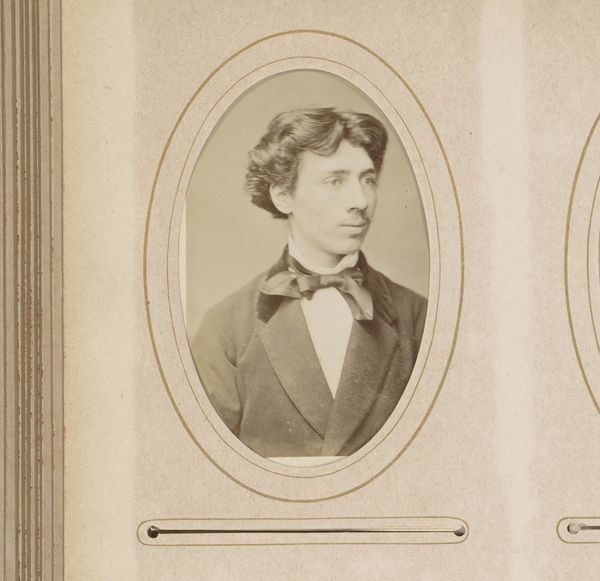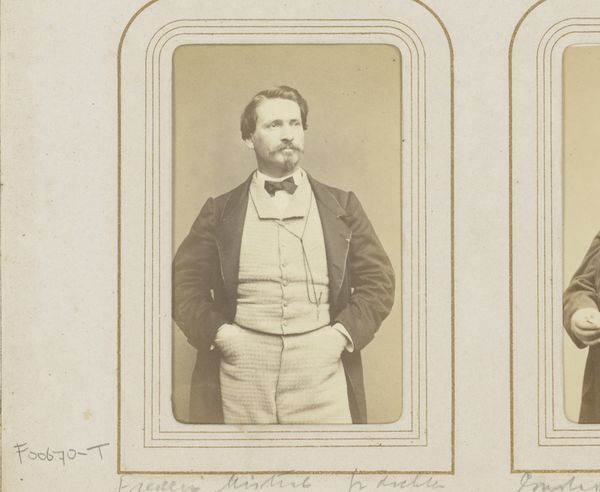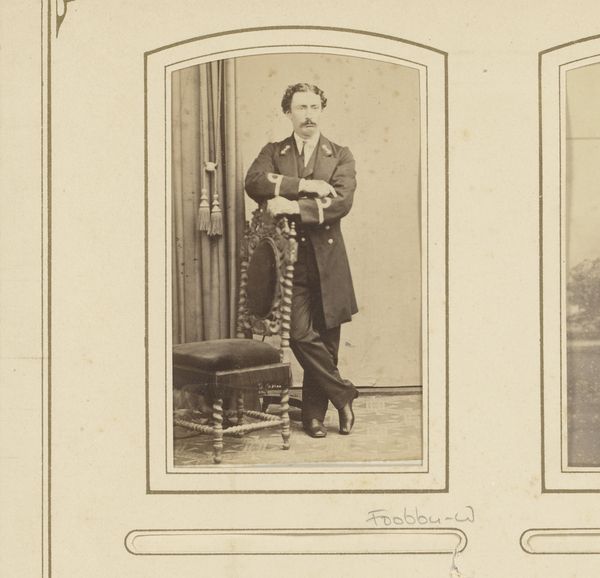
photography, albumen-print
#
portrait
#
16_19th-century
#
photography
#
albumen-print
Dimensions: height 84 mm, width 51 mm
Copyright: Rijks Museum: Open Domain
Curator: Standing before us is an albumen print, tellingly titled, "Portret van een man", placing the emphasis firmly on identity. We believe it was created between 1867 and 1880 by the studio of Lege & Bergeron. What strikes you most upon seeing it? Editor: It's the tonality; the way the sepia whispers across the surface creates an effect of deep melancholy. The almost imperceptible gradations seem to coalesce around his eyes, don’t you think? Curator: Absolutely. That subdued palette certainly reinforces the sitter’s quiet dignity. Looking at him, I am struck by his pose—his hand tucked into his coat suggests an almost defensive posture, but also the limitations placed on him as an upper-class, educated gentleman, his place and participation in the society that defined him. Editor: The composition itself is quite formal; there's a balanced stillness, even. The gentleman is centrally placed, and the light seems to wash down and unify the tonal shifts and shadows on his face, hands, and attire. It guides your eye. Curator: Right, and thinking about the wider social and political currents during that period, this posture could also be interpreted as one of cautious reserve in a time of considerable political transformation in Europe. Remember, these printed photographs democratized portraiture—previously reserved for the elite, a development that introduced photography’s relationship to self-representation in relation to broader social issues like gender roles and class consciousness. Editor: That is well-articulated. Even the layering and tailoring of his clothing create structural contrasts – a sharp intersectionality. But back to form - his suit and coat and his general tidiness contrast and also blend in a visually appealing tonal fashion. The button-down vest creates visual order within the image. Curator: True. Overall, considering its historical context and the inherent performativity of portraiture, this is a telling commentary on gender and social expectations during that era. Editor: And the tonal and structured execution certainly creates a well-formulated photograph of note. Curator: Exactly. It provides invaluable insights into how social identity was consciously presented and visually consumed. Editor: So, more than just an aesthetic piece. Curator: Precisely, the artwork invites us to reconsider our understanding of representation as intrinsically bound up with political expression and identity performance.
Comments
No comments
Be the first to comment and join the conversation on the ultimate creative platform.
